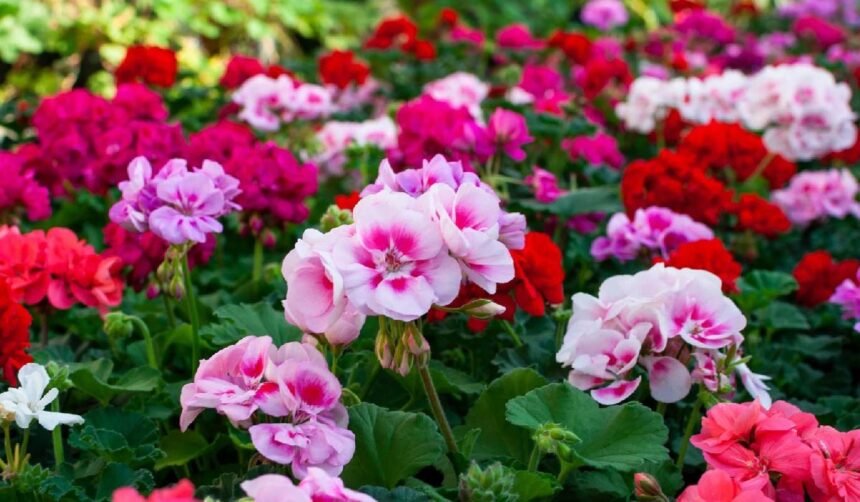“Sometimes the smallest things take up the most room in your heart.” A.A. Milne. This quote perfectly captures the magic of small flowers. They might be tiny in size, but their beauty, fragrance, and symbolism can transform entire spaces.
Whether you’re planting them in your garden, arranging them in a bouquet, or using them to decorate a balcony, small flowers add delicate charm that big, showy blooms can’t always match.
We’ll explore the most popular types of small flowers, their meanings, gardening tips, and creative uses in arrangements and landscaping.
Popular Types of Small Flowers
When people think of flowers, they often imagine roses, lilies, or sunflowers—big and bold. But small flowers like baby’s breath, pansies, and lily of the valley bring elegance in subtle ways.
- Baby’s Breath (Gypsophila): Known as the “filler flower” in bouquets, this delicate white bloom symbolizes purity and everlasting love.
- Forget-Me-Nots: Tiny blue flowers with a heartfelt meaning—remembrance and true friendship.
- Lily of the Valley: Bell-shaped, fragrant flowers that symbolize sweetness and humility.
- Pansies: Small but colorful, pansies are cold-resistant and perfect for brightening gardens.
These flowers prove that size isn’t everything. Their beauty lies in detail, texture, and symbolism.
Symbolism and Meanings of Small Flowers
Small flowers carry big meanings. In many cultures, they represent innocence, humility, and subtle beauty.
- Romance & Love: Baby’s breath is often used in wedding bouquets to symbolize everlasting love.
- Remembrance: Forget-me-nots, as their name suggests, stand for memories that never fade.
- Spiritual Purity: Lily of the valley is associated with purity and renewal, often used in religious ceremonies.
- Cheerfulness: Tiny pansies are symbols of free thought and joy.
The symbolism makes small flowers perfect for meaningful gifts. They’re often chosen for weddings, memorials, and special celebrations.
Gardening with Small Flowers
Small flowers aren’t just beautiful—they’re also versatile and low-maintenance. Gardeners love them because they add texture and contrast when paired with larger plants.
- Soil & Sunlight: Most small flowers prefer well-drained soil and partial to full sun. Forget-me-nots thrive in moist soil, while pansies love cool weather.
- Watering Needs: Small flowers need regular but light watering. Overwatering can cause root rot.
- Containers & Pots: Perfect for balconies and patios, small flowers like violas and alyssum thrive in containers.
- Companion Planting: Pairing small flowers with tall plants creates stunning layered gardens. For example, alyssum looks lovely under roses.
With the right care, these flowers bloom season after season, creating a continuous cycle of charm.
Small Flowers for Floral Arrangements
Florists adore small flowers because they add detail and texture to arrangements. Without them, bouquets can look flat or incomplete.
- Filler Flowers: Baby’s breath, chamomile, and mini roses fill gaps and add softness to bouquets.
- Main Blooms: Tiny pansies or violas can even serve as the star flowers in smaller, minimalist arrangements.
- DIY Wedding Décor: Small flowers are budget-friendly options for centerpieces, boutonnieres, and bridal crowns.
- Preservation: Many small flowers can be dried and used in crafts like resin art, greeting cards, and wreaths.
These tiny blooms make arrangements more romantic, balanced, and eye-catching.
Landscaping Ideas with Small Flowers
Small flowers can completely transform outdoor spaces when used creatively in landscaping.
- Borders & Pathways: Tiny flowers like sweet alyssum and lobelia create colorful borders that guide the eye.
- Rock Gardens: Small flowers fit naturally between rocks, bringing color to dry landscapes.
- Layered Flower Beds: Combine tall plants in the back with mid-sized and small flowers in the front for a professional look.
- Low-Maintenance Beauty: Some small flowers, like dianthus, are hardy and require very little care, perfect for busy gardeners.
By mixing colors and textures, you can design a garden that feels full of life without needing large, space-consuming plants.
Best Small Flowers by Season
Spring:
- Crocus: Among the first flowers to bloom after winter.
- Primrose: Bright and cheerful, with a wide color range.
- Snowdrops: Tiny white flowers that symbolize hope.
Summer:
- Sweet Alyssum: Carpet-like, with a sweet fragrance.
- Dianthus: Frilly petals in pink, red, and white.
- Chamomile: Pretty and medicinal at the same time.
Fall:
- Violas: Hardy blooms that keep flowering in cooler weather.
- Heather: A small shrub with delicate purple flowers.
Winter:
- Winter Jasmine: Yellow blossoms that bring cheer in the cold.
- Pansies: Continue to bloom even in frosty weather.
With these choices, your garden can have color and fragrance all year round.
Conclusion
Small flowers prove that beauty is found in details. They’re meaningful, versatile, and perfect for any occasion, whether in a garden bed, bouquet, or balcony pot. By mixing these tiny blooms into your space, you bring in charm, color, and joy that lasts across seasons.
So, next time you think about flowers, don’t just go for the big ones. Add a touch of small flowers to your life and watch how these delicate blossoms create a big impact!









